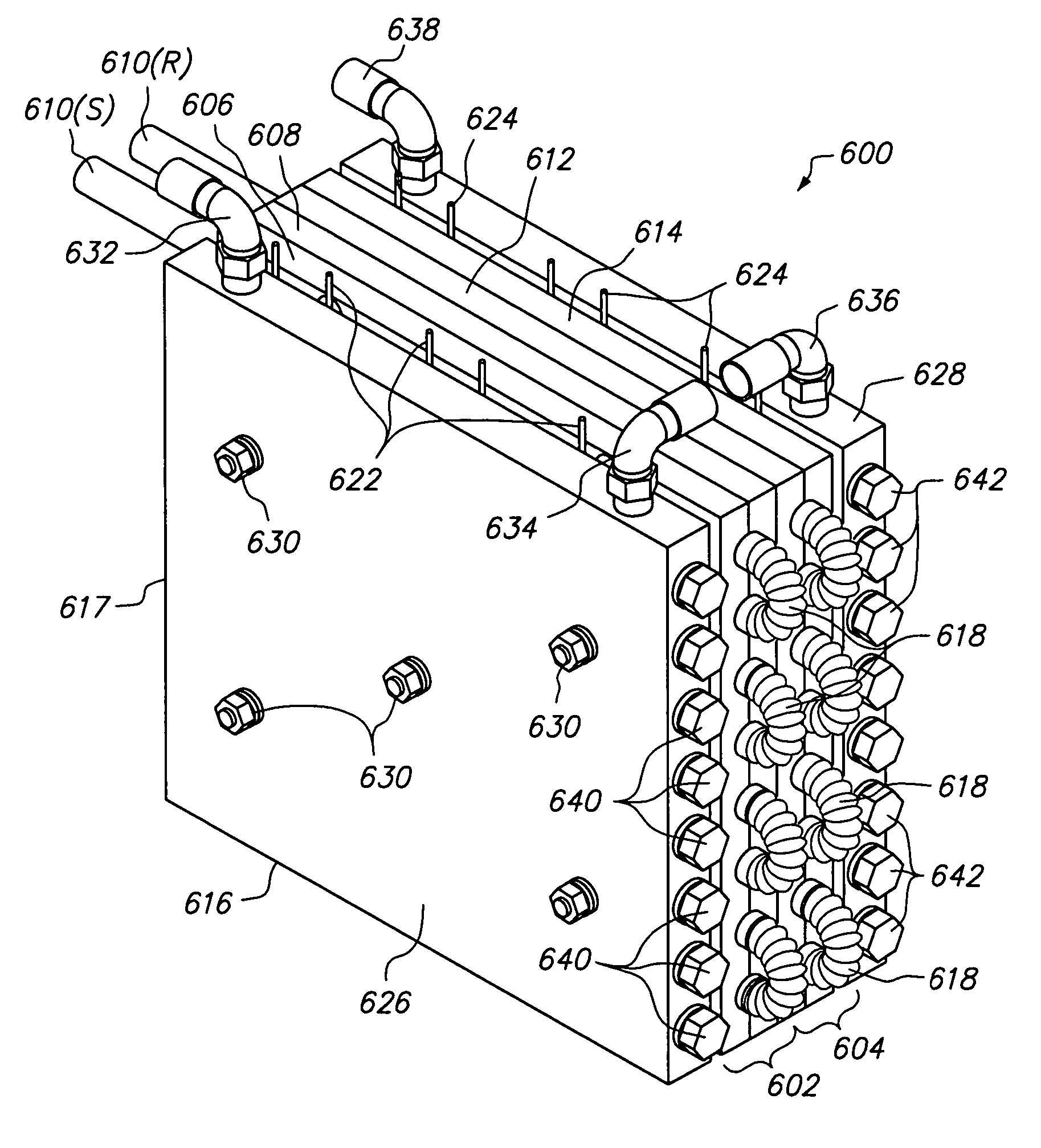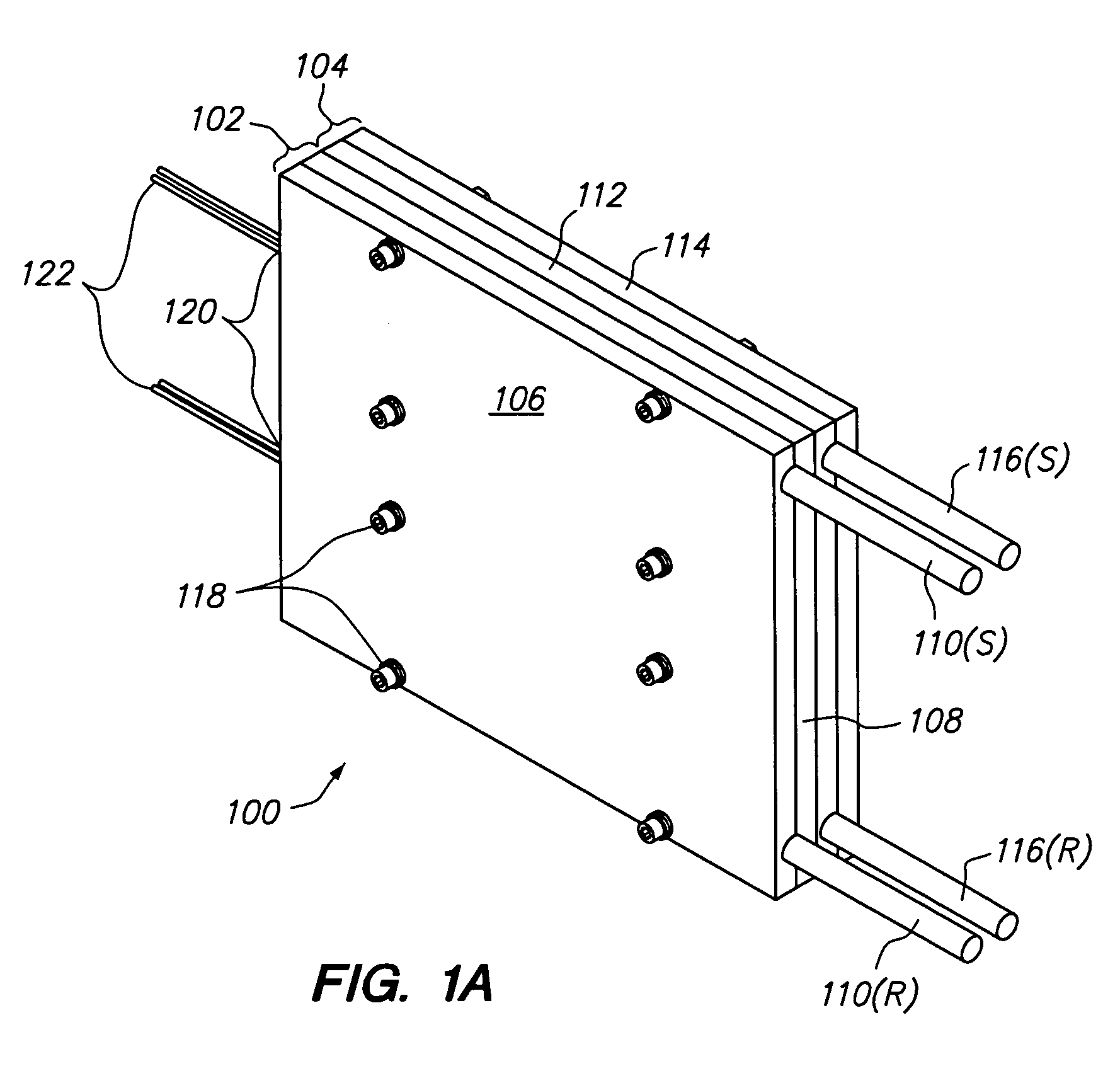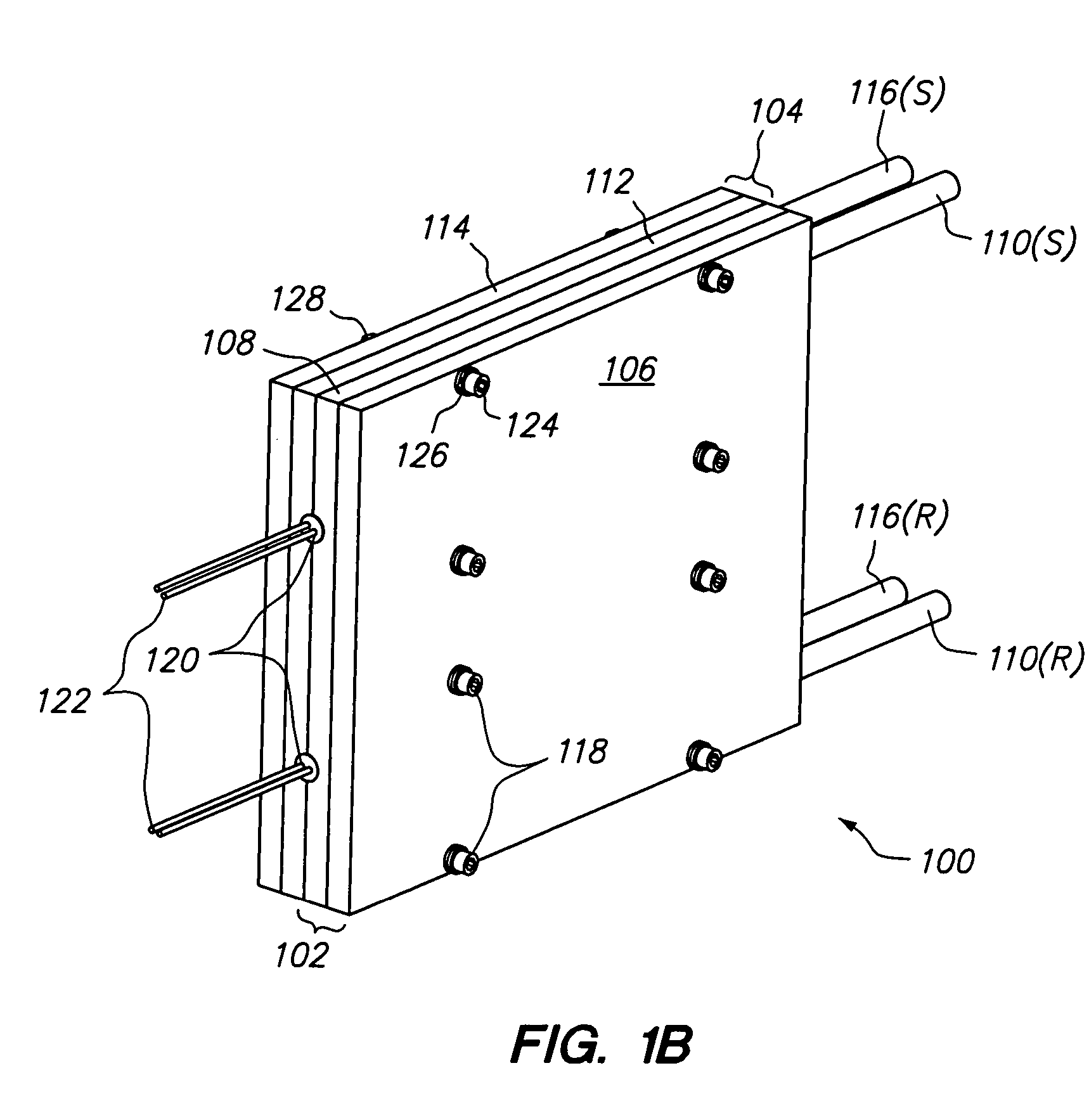Heat exchanger for high purity fluid handling systems
a heat exchanger and fluid handling technology, applied in the field of compact heat exchangers, can solve the problems of increasing the potential for particle build-up and contamination of the etching fluid, increasing the heat required to raise and maintain the temperature of the etchant, and increasing the risk of contamination, etc., to achieve convenient maintenance and facilitate high-temperature heating of high-purity and/or corrosive fluids.
- Summary
- Abstract
- Description
- Claims
- Application Information
AI Technical Summary
Benefits of technology
Problems solved by technology
Method used
Image
Examples
Embodiment Construction
[0027]The present invention overcomes the problems associated with the prior art, by providing a novel heat exchanger that utilizes temperature resistant, corrugated tubing to improve heat transfer between the heat exchanger and fluid, while simultaneously remaining compact, inexpensive, and easy to maintain. As used herein, “corrugated tubing” is understood to include tubing having convoluted sections formed therein. In the following description, numerous specific details are set forth (e.g., particular heat sinks, particular types of heating / cooling devices, particular fasteners, etc.) in order to provide a thorough understanding of the invention. Those skilled in the art will recognize, however, that the invention may be practiced apart from these specific details. In other instances, details of well-known fluid handling practices (e.g., supply and return pipe routing, electrical routing and control, heat exchanger mounting methods, etc.) and components have been omitted, so as n...
PUM
| Property | Measurement | Unit |
|---|---|---|
| Temperature | aaaaa | aaaaa |
| Diameter | aaaaa | aaaaa |
Abstract
Description
Claims
Application Information
 Login to View More
Login to View More - R&D
- Intellectual Property
- Life Sciences
- Materials
- Tech Scout
- Unparalleled Data Quality
- Higher Quality Content
- 60% Fewer Hallucinations
Browse by: Latest US Patents, China's latest patents, Technical Efficacy Thesaurus, Application Domain, Technology Topic, Popular Technical Reports.
© 2025 PatSnap. All rights reserved.Legal|Privacy policy|Modern Slavery Act Transparency Statement|Sitemap|About US| Contact US: help@patsnap.com



